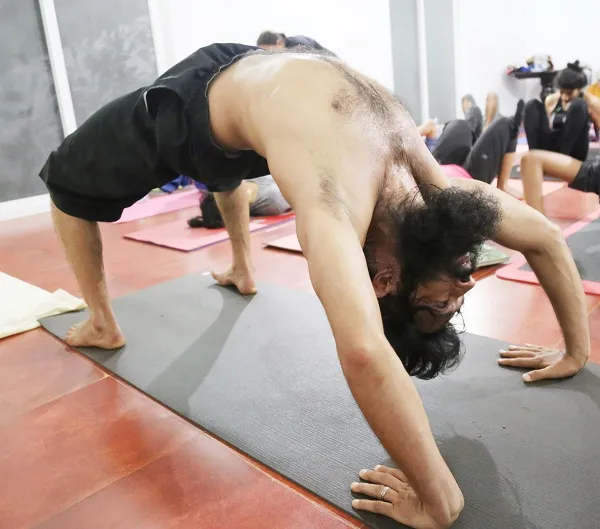Fat-burning yoga asanas for weight management
Yoga and fat loss
Weight management truly sounds more complicated than it is. To bridge the gap between where you are now and where you see yourself, you only require a two-fold plan of yoga classes and a balanced diet. One does not have to jump through loops of fire to accomplish their target weight goal or have poor eating habits and engage in excessive workout. On the flip side, it is essential to have a well-thought-out plan and an execution strategy to fight the fat, failing at which leads to excess stomach blubber and unnecessary health issues. This type of fat accommodation in our body gives room to high blood pressure, diabetes, heart-related ailments, and other harmful consequences to the same effect. Ordinarily, there is a cause and effect relationship between stress and obesity; it is hard to correct one without correcting the other. These mutually inclusive events require a fundamental lifestyle shift to reap its benefits that prolong for a continues duration of time.

Stress levels found in our systems directly put our body in ‘famine mode’, wherein the mind is tricked to believe that the body lacks enough food, retaining the existing fat and making it harder to burn it. Sometimes, this situation gives rise to ‘emotional eating’ of foods that have high sugar and fat content; this leads to counter-productive behaviour for those looking for weight loss. To overcome this rut, we can take the divine shelter of yoga asanas, pranayam and meditation since the aforementioned elements are a holistic way to bring in a sense of peace while reducing excessive fat.
Yogic asanas to reduce belly fat: Yoga leads to reduction in stress hormones, making it easier to focus on overall weight loss:
1) Santolanasana (balancing or straight plank position)
How to get into the posture:
Step 1: Lay flat on the floor with your palms next to your chest.
Step 2: Raise your whole body up, balancing on just your palms and toes.
Step 3: Place your knees straight and avoid raising your pelvis.
Step 4: Keep your body straight like a plank.
Step 5: Keep your neck straight.

Breathing methodology:
- a) Gentle inhalation and exhalation. Hold on exhale.
Advantages:
- a) Enhances nerve balance and helps develops inner equilibrium.
- b) Helps strengthen the limbs and back.
- c) Helps in toning of the stomach.
2) Vasisthasana (side plank pose):
How to get into the posture:
Step 1: Begin by assuming Santolanasana.
Step 2: Slowly roll to your right side with your body supported by your right palm and arms, and lift your left arm up in the air.
Make sure your entire body is aligned in a straight line, your outer side of the right feet are firmly on the ground with your left foot on top of your right foot, precisely and heel on heel and toe on toe.
Step 3: Ensure that your left hand is straight up above you. Gaze at your left hand. Balance your body, and keep your arms and legs straight.
Step 4: Repeat this practice on the other side by changing hands and leg position.

Breathing methodology:
- a) Breathe normally. Hold on inhale
Advantages:
- a) Improves balance, strengthens and tones the arms, and provides an overall bodily balance.
3) Chaturanga Dandasana:
How to get into the posture:
Step 1: Begin by assuming Santolanasana.
Step 2: Exhale and bend your elbows such that your shoulder balls are slightly ahead of your palms, engaging your triceps and quadriceps. You are on your toes.
Step 3: Adjust your position such that you are in a lower Santolanasana position with your body hovering parallel and inches away from the ground.
Breathing methodology:
- a) Exhale while assuming the final position. Hold on exhale.
Advantages:
- a) Helps strengthen the arms.
- b) Helps in toning of the stomach.
- c) Helps strengthen the core muscles of the body.
4) Chakrasana:
How to get into the posture:
Step 1: Lie down on your back.
Step 2: Fold your legs toward your body.
Step 3: Place your palms above your shoulders and reverse your palms such that your fingers point toward your shoulders.
Step 4: Inhale deeply and using the strength of your arms and feet, lift your centre body and head up toward the sky in a way that you form a semi-circle with the ground.

Breathing Methodology:
- a) Inhale while lifting your torso upward. Hold on inhale.
Advantages:
- a) Tones the overall body muscles.
- b) Strengthens the arms, legs, abdomen, and back.
- c) Aids in fat loss.
Yoga asanas first help cut down on the stubborn body fat and calories and then help to chisel and sculpt the body, leading you to accomplish your goal with a sense of happiness, calmness, and bliss.
(Disclaimer: The views and opinions expressed in this article are those of the author and do not necessarily reflect the views of YourStory.)







